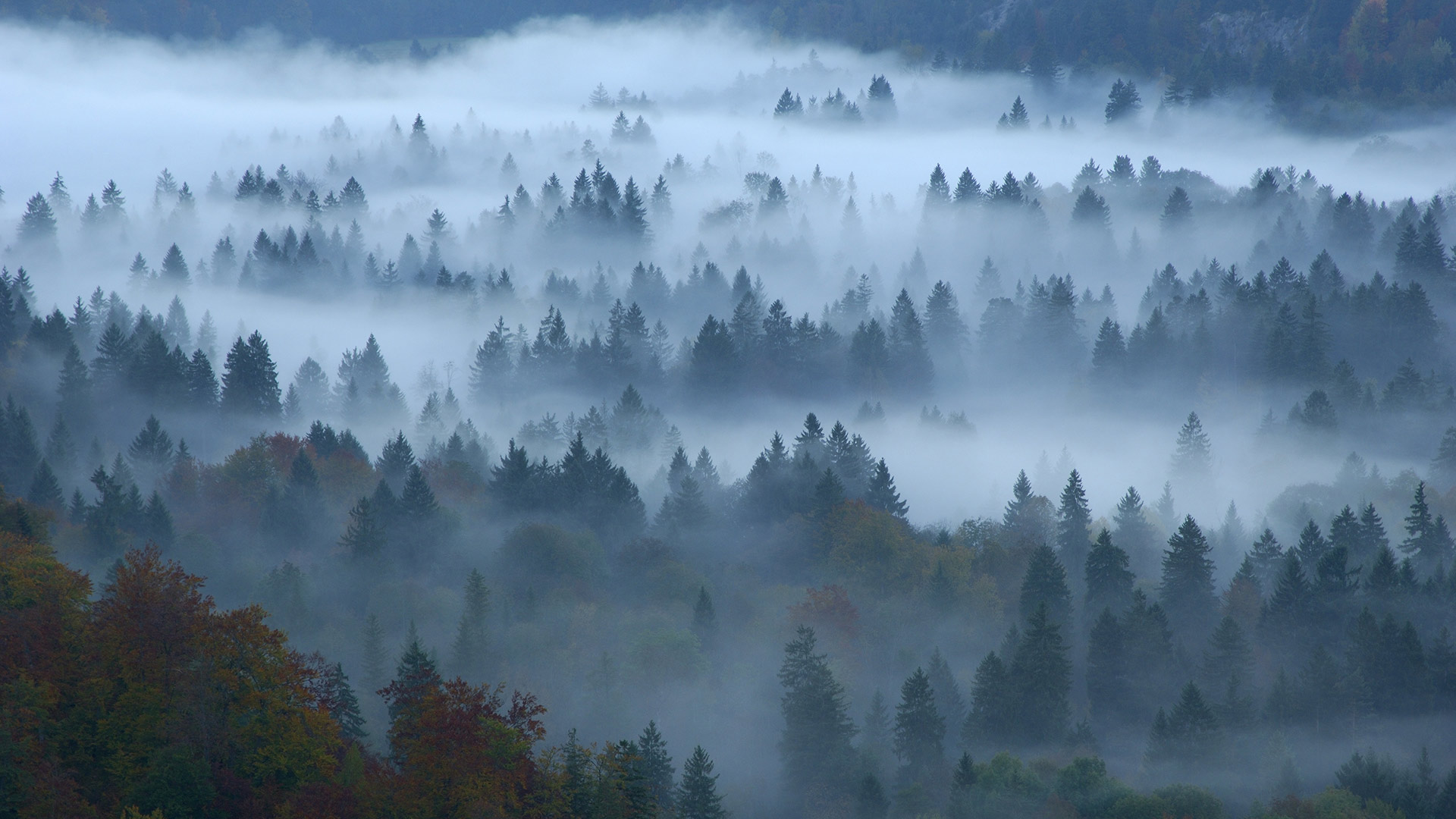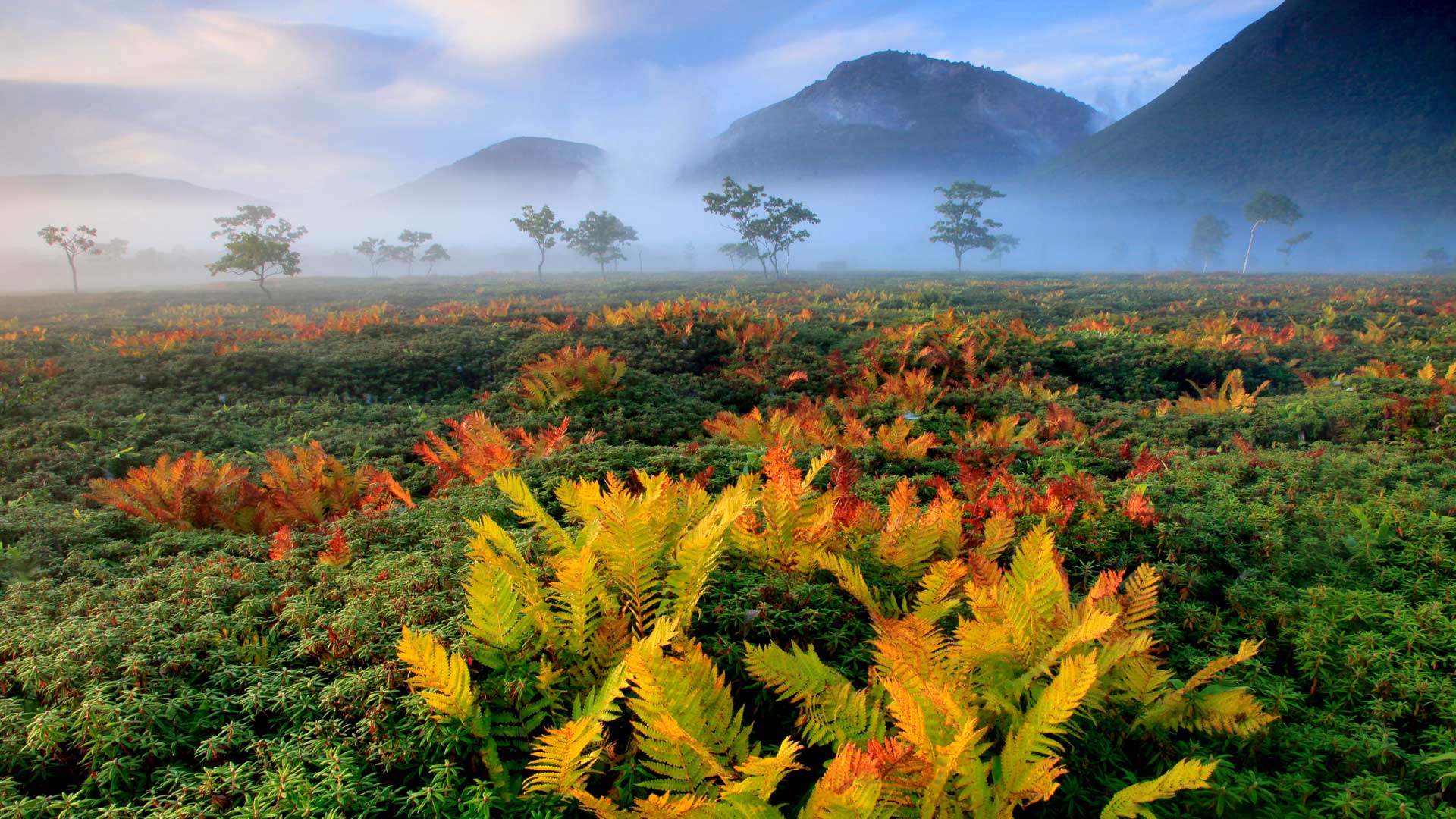Andy Goldsworthy's 'Wood Line' installation along Lovers' Lane in the Presidio of San Francisco, California (© Chris LaBasco/Alamy)
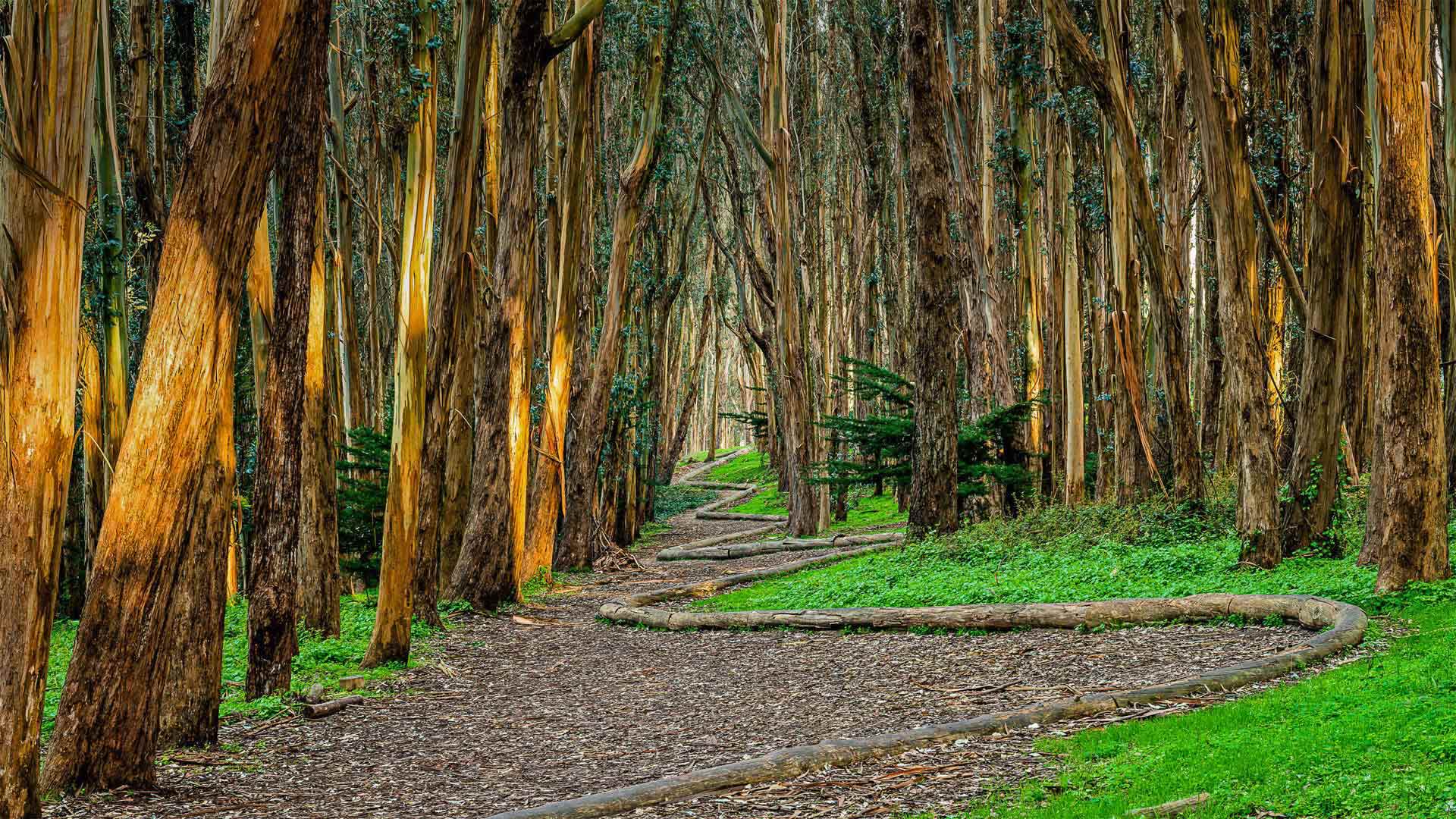
Andy Goldsworthy's 'Wood Line' installation along Lovers' Lane in the Presidio of San Francisco, California (© Chris LaBasco/Alamy)
Take a hike near Lovers' Lane
For those of you who love getting outside, you're in luck! Today is Take a Hike Day, an activity the American Hiking Society says will make you happier as you enjoy the great outdoors. And what better way to take a hike than a walk down Lovers' Lane in San Francisco's Presidio? The sinewy trail we see in today's photo is called 'Wood Line' and was designed by the environmental artist Andy Goldsworthy. By using felled eucalyptus trees, Goldsworthy intended this land art to eventually biodegrade and fade back into the forest floor. It's one of four of his works within this national park that once served as a US military outpost.
No matter where you are, we hope you'll find the closest trail to explore. The US National Trail System maintains more than 55,000 miles of National Scenic, Historic, or Recreational trails through some of the most beautiful, interesting parts of the country, so you have plenty of hikes to choose from.
混交林,菲森,巴伐利亚,德国 (© Erich Kuchling/DEEPOL by plainpicture)
The interior of the Abu Simbel Great Temple in Egypt (© George Steinmetz/Getty Images)
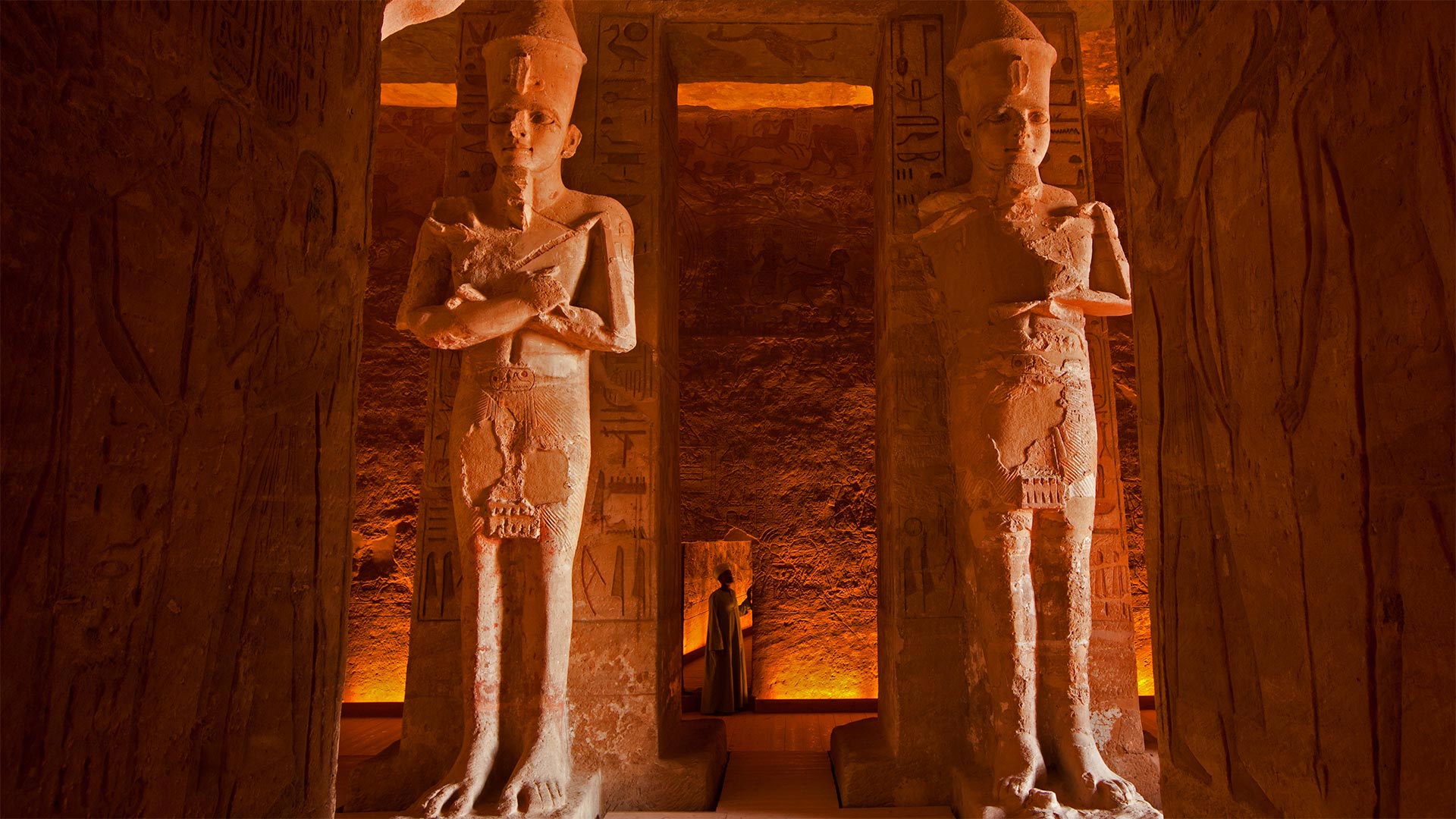
The interior of the Abu Simbel Great Temple in Egypt (© George Steinmetz/Getty Images)
A temple, preserved
These temples, commissioned by Egyptian pharaoh Ramesses II around 1264 BCE, would not be around for us to photograph if it weren't for the efforts of the United Nations Educational, Scientific and Cultural Organization (UNESCO). A couple centuries after the Abu Simbel temples were completed, Ramesses' empire had collapsed and the sands of the Nubian region of North Africa began to consume them. European explorers 'discovered' Abu Simbel in the early 1800s, leading to massive efforts to excavate and preserve the ruins of the great pharaoh's monument to himself.
But it wasn't until the 1950s, when the Egyptian government began drawing up plans for the Aswan High Dam, that preservation of Abu Simbel and other historic sites took on extra urgency. Planners knew the dam would flood the banks of the Nile, submerging the temples. So, the United Nations' UNESCO branch set to work on a solution to keep Abu Simbel preserved and accessible. In 1968, UNESCO's first major project was to literally move the massive temples to higher ground. They succeeded, of course, safeguarding one of the world's great archaeological sites. Out of this effort emerged UNESCO's drive to protect the world's most important sites of both cultural and natural heritage. To date, UNESCO has protected more than 1,000 World Heritage Sites across 167 countries that are ‘irreplaceable sources of life and inspiration.'
日本北海道 (© Hiroshi Yokoyama/eStock Photo)
特卡波湖岸上的羽扇豆,新西兰 Lupins on the shores of Lake Tekapo in New Zealand (© Stanislav Kachyna/Shutterstock)
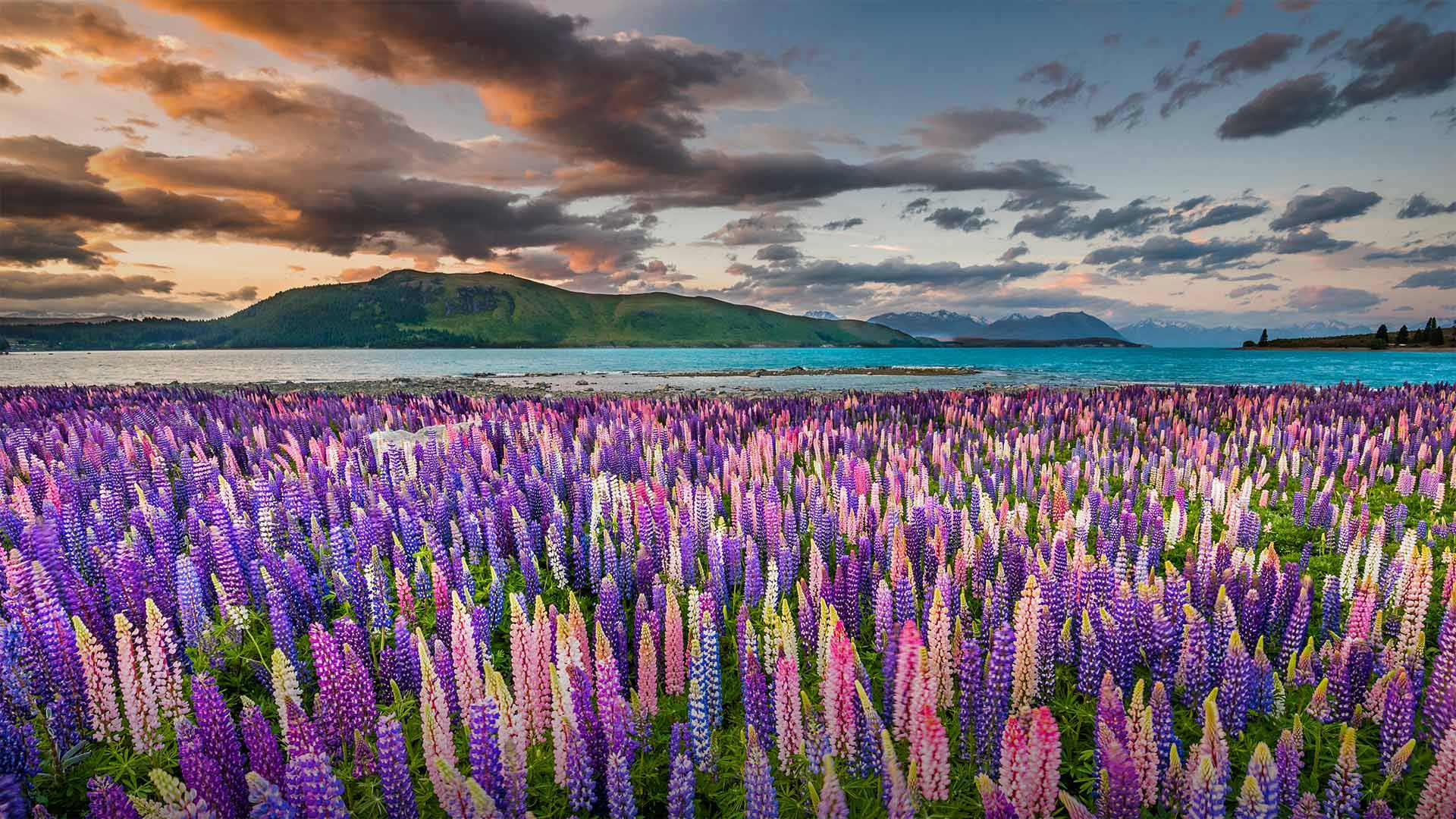
特卡波湖岸上的羽扇豆,新西兰 Lupins on the shores of Lake Tekapo in New Zealand (© Stanislav Kachyna/Shutterstock)
What are these blooms?
Lupins usually hit peak bloom around mid- to late-November in the Mackenzie region on New Zealand's South Island. This image shows the burst of color along the shores of Lake Tekapo, famed for its annual lupin blooms. The colorful carpets of purples, pinks, blues, and whites along waterways and roads look stunning, drawing tourists to the area, and locals appreciate the economic benefits that come with these visitors. But lupins hail from North America, and in New Zealand, they're considered invasive species that crowd out native flora, ruining the habitat for birds like the wrybill, banded dotterel, and other species that live along the waterside.
Beloved by some, rued by others, lupins are said to have taken hold here thanks to local resident Connie Scott. As the story goes, back in the 1950s, Scott scattered lupin seeds along a main highway to add some color to the barren landscape and the blooms have been spreading ever since. Scott's remembered these days as the 'Lupin Lady.' A beautiful legacy? Suppose it depends on your point of view.
排灯节期间摆放在蓝果丽上的油灯 Oil lamps being arranged on rangoli during Diwali (© Subir Basak/Getty Images)

排灯节期间摆放在蓝果丽上的油灯 Oil lamps being arranged on rangoli during Diwali (© Subir Basak/Getty Images)
Decorating for Diwali
During Diwali, the 5-day festival of lights, vibrant patterns of all shapes and sizes are created on the floor out of materials such as colored rice, sand, and flower petals. The charming Indian folk art, called rangoli, is usually made by the entrance of a home to welcome guests and deities, and is said to bring good luck on special occasions. Celebrations might be a bit different this year, but buildings will still be brightened by these decorative drawings, twinkling lights, and small oil lamps, known as diyas.
Diwali, which means 'row of lights' in the ancient language of Sanskrit, is commemorated every fall by millions of Hindus, Sikhs, Jains, and some Buddhists in India and across the world. Each religion marks different historical events and stories, but what they all have in common is the concept of new beginnings, the triumph of good over evil, and the victory of light over darkness. Today marks the third day of Diwali, when festivities reach their peak.
Connery Pond和怀特菲斯山,纽约州 Connery Pond and Whiteface Mountain in New York state (© Henk Meijer/Alamy)
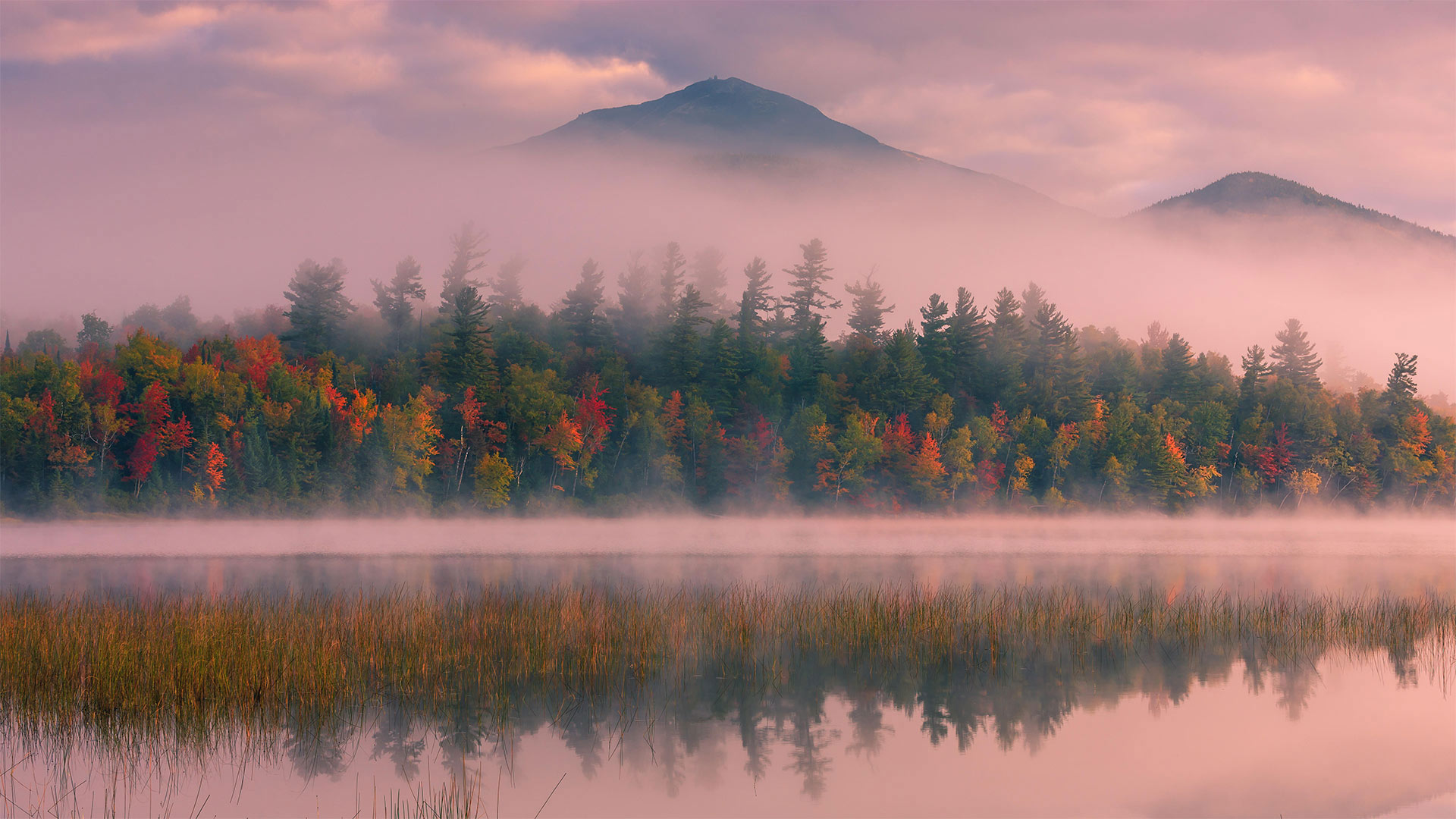
Connery Pond和怀特菲斯山,纽约州 Connery Pond and Whiteface Mountain in New York state (© Henk Meijer/Alamy)
Upstate autumn
Paddle out onto Connery Pond in the Adirondack Mountains region of New York and you may be treated to this mist-shrouded peekaboo tease from Whiteface Mountain. We're in the North Elba region of New York, where the town of Lake Placid is known to many as the two-time home of the Winter Olympic Games, in 1932 and again in 1980. The Alpine skiing events in 1980 were held right on the slopes of Whiteface Mountain.
But let's not get ahead of the seasons. In autumn, when this photo was taken, the forests of the Adirondacks burst with kaleidoscopic color. It does look a bit brisk out there though, so make sure to pack a cozy sweater.
恶地国家公园,南达科他州 Badlands National Park, South Dakota (© Dennis Frates/Alamy)
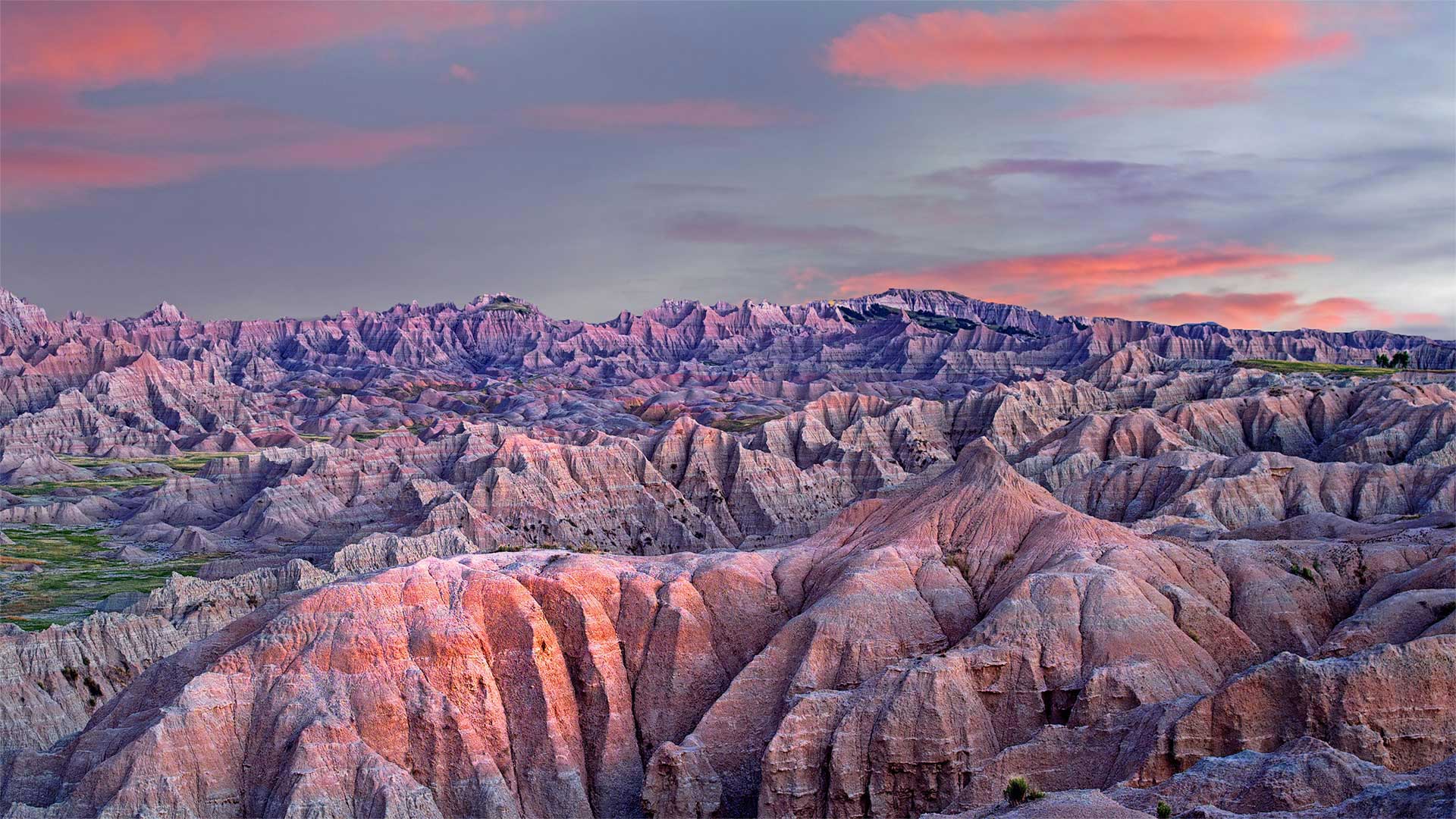
恶地国家公园,南达科他州 Badlands National Park, South Dakota (© Dennis Frates/Alamy)
Baddest of the badlands
Heading west on Interstate 90, peek out the driver's side as you approach Rapid City, South Dakota, for the first clue you've entered the Wild West: the expansive, layered landscape of Badlands National Park. It's enjoyed government protection since 1939, first as a national monument and more completely after it was upgraded to national park status on this day in 1978. The park protects 244,000 acres of dramatically eroded bedrock replete with fossil beds—as well as the nation's largest mixed-grass prairie, hosting bison, prairie dogs, and endangered black-footed ferrets.
Before it was a national park, Native Americans called the Badlands home for more than 10,000 years. The Lakota had displaced other tribes to control the region by about 150 years ago—the same time settlers from the East were undermining Native power structures throughout the frontier. In response to these incursions, many Lakota in the late 19th century embraced a cross-tribal spiritual movement known as the 'Ghost Dance.' It was a system of rituals—including the namesake circle dance often performed here in the Badlands—believed to impede the encroachment of white settlers and deliver Natives from violence. But those efforts seemed futile by late 1890 as, just south of here, conflicts culminated in the Wounded Knee massacre where US forces killed more than 250 unarmed Lakota men, women, and children.
The conflict and ensuing tragedy is one of American history's ugliest chapters—but it bears reflection during Native American History Month as we ponder the Badlands' past, as vast and multilayered as the bedrock that makes it up.
巴罗洛葡萄园的山丘,意大利皮埃蒙特 The hills of Barolo vineyards in Piedmont, Italy (© Marco Arduino/eStock Photo)
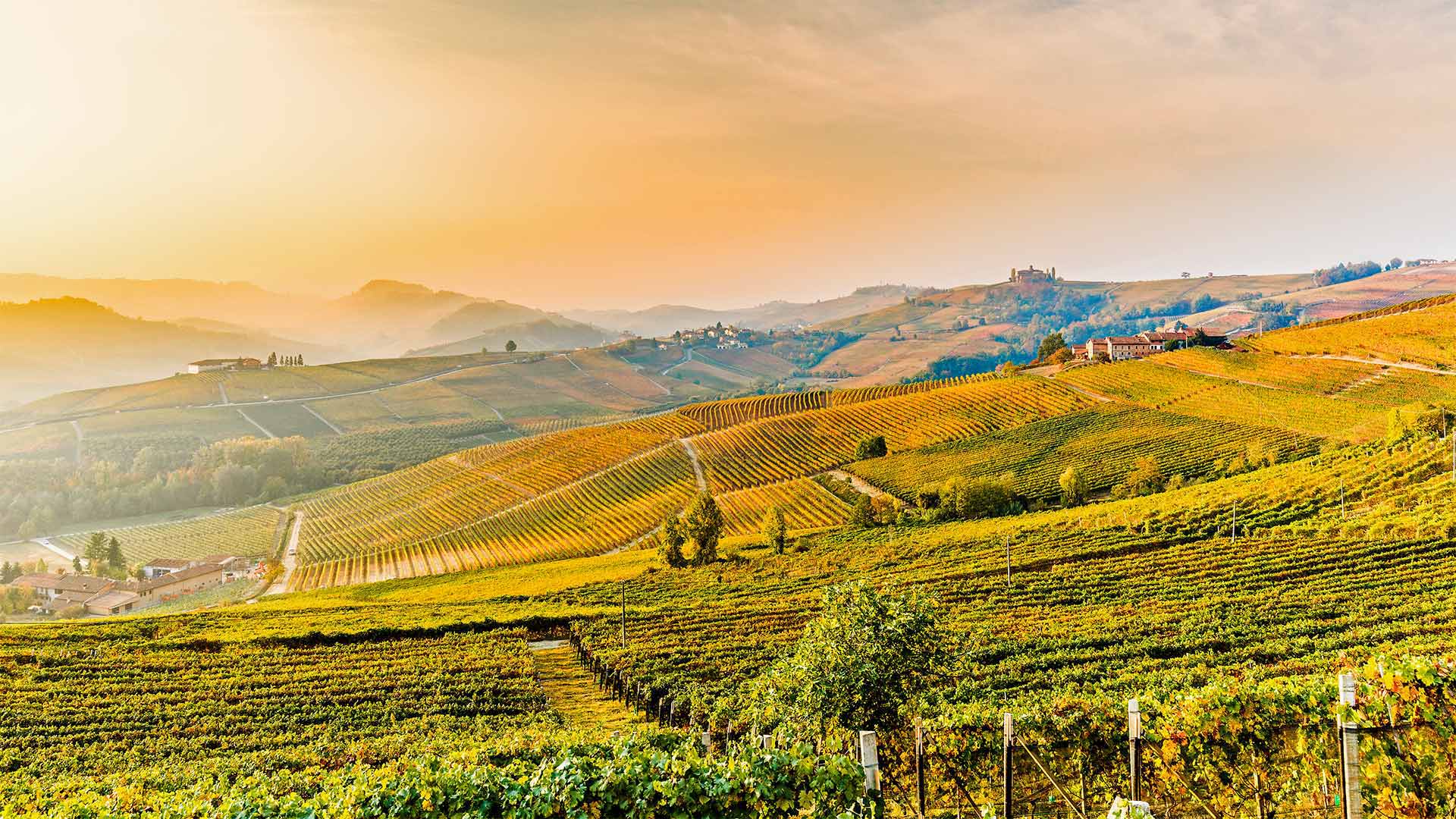
巴罗洛葡萄园的山丘,意大利皮埃蒙特 The hills of Barolo vineyards in Piedmont, Italy (© Marco Arduino/eStock Photo)
Autumn in Piedmont
This beautiful fall scene is in the Langhe area of Piedmont, one of the great winegrowing regions in Italy. More specifically, we're looking at the hills of Barolo, a town famous for its locally produced wine of the same name, made from Nebbiolo grapes. In addition to wine, Piedmont is known for its truffles, which are harvested this time of year. Piedmont chocolate is also highly prized. Bicerin, a popular coffee-chocolate drink from the city of Turin (which hosted the 2006 Winter Olympics), has been around since the 18th century. The piemontesi, as locals are called, know how to eat and drink. Salute!
德文特湖上的德文特岛房屋,英国坎布里亚郡湖区国家公园 Derwent Island on Derwentwater in the Lake District National Park, Cumbria, England (© Chris Warren/eStock Photo)
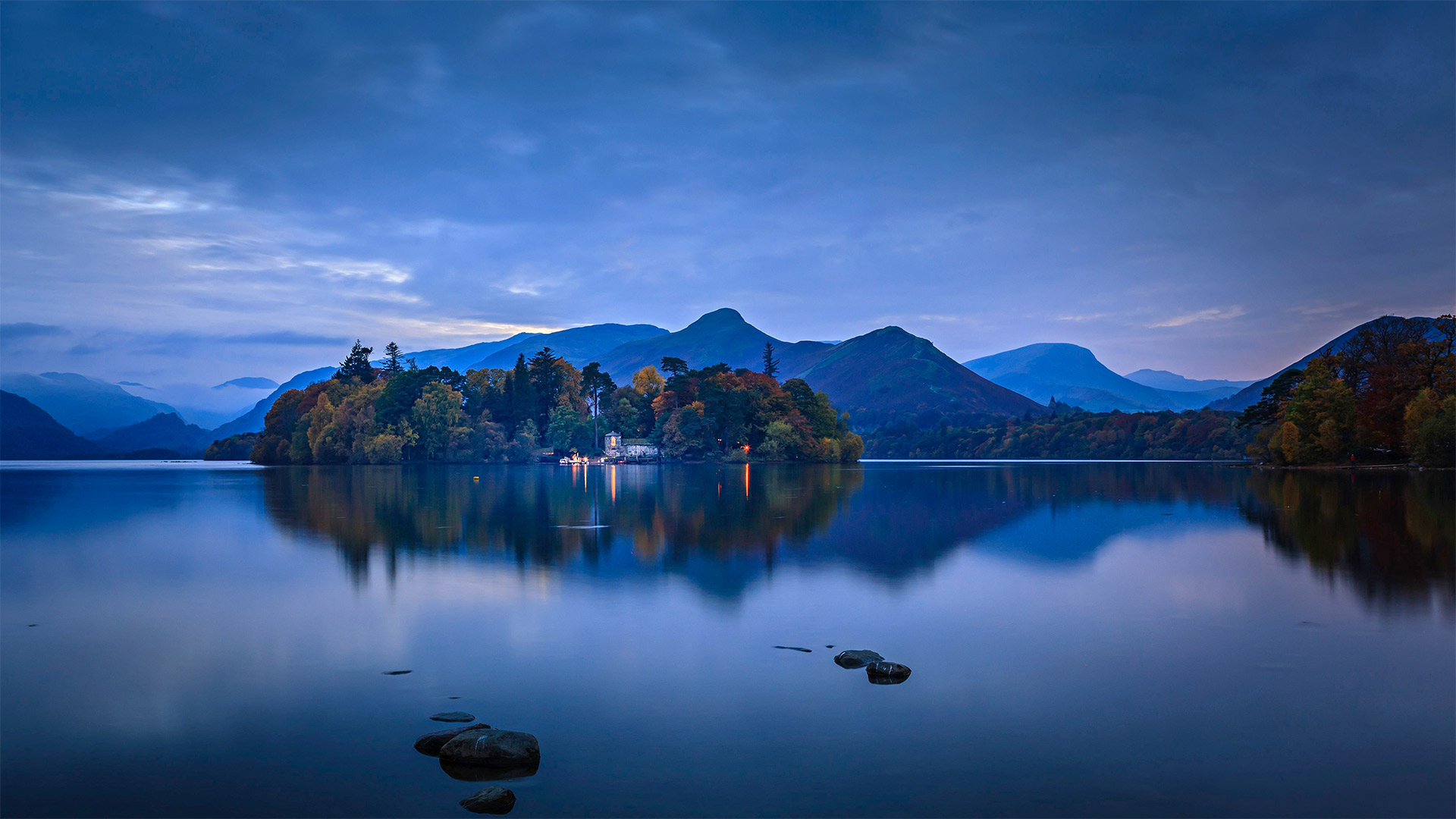
德文特湖上的德文特岛房屋,英国坎布里亚郡湖区国家公园 Derwent Island on Derwentwater in the Lake District National Park, Cumbria, England (© Chris Warren/eStock Photo)
Languid life on the Lakes
Surrounded not only by the spectacular fells (moors) and pikes (peaks) seen here on the horizon but also lush, rolling farmlands, the lake known as Derwentwater is one of more than 30 bodies of water in North West England's Lake District. Rounder and broader in shape than its fingerlike brethren, Derwentwater is home to several small isles like this one—though the classical estate built here is an unusual interruption of this mostly-natural tableau.
We're seeing the island's boathouse, one of several buildings that a wealthy eccentric named Joseph Pocklington had erected shortly after his 1778 purchase of the island. The main building, Derwent Island House, is set out of view farther back on the woody isle. The estate once included a stone fort housing a cannon, often fired to incite playful 'raids' on the island during regattas Pocklington hosted each year on the lake. Critics of old—among them poet William Wordsworth, who famously loved the Lakes—decried Pocklington's additions as eyesores, but modern-day visitors gladly line up to visit the Italianate estate on the five days a year that it's open to the public.
